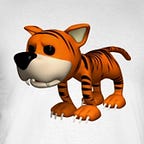It’s Got to Be the Shoes
A few years back, I noticed that on mornings after long runs I would waddle to the bathroom and I experienced persistent hip pain. I first chalked it up to age. But after a visit to my local running store, it turns out all I needed was a new pair of running shoes that were better matched to the runner I had evolved into. Perhaps it is about the shoes.
Shoes are likely the most important aspect of your running wardrobe. Singlet, shorts, and socks do not inspire very many conversations, but people will talk about and even defend their favorite running shoes. In fact, some runners are so zealous about their shoes you have probably heard them say, “I can only run in <insert shoe name and model here>.”
Purchasing running shoes is a personal thing. We make purchases with regard to what we see with our eyes and it is certainly easier to find a brand and model of shoe and stick with it. But should we?
Running shoe designers change or tweak each model of shoe they produce every year or so. Some models get a full redesign, which could include new technology and new materials. Other models get subtle modifications that could slightly affect things such as stack height or drop.
In short, the shoe you were excited about last year may not be the same shoe you are buying this year. And over time, a shoe may bear little resemblance to the shoe you originally fell in love with. Additionally, our bodies are constantly changing, so what may have been your favorite running shoe may no longer be the best shoe for your body.
Our gait, our build, our weight, our age, and other factors can determine how much or how little shoe we need. Heel strike, push-off, stride, and the arch of the foot contribute to how much work we may need the shoe to do for us. All of a sudden, finding the right shoe doesn’t seem as easy as sticking to the same model year after year or even reading shoe reviews.
It can be a tough thing to move on from a favorite model or even a brand. There is always a healthy dose of trepidation when I change brands and models. But my feet have always been happy when I get it right.
Getting it right should be our goal when purchasing our next pair of shoes. When people ask, I tell them I cannot recommend the best shoe for them, but I do give them some advice.
First, close your eyes. This is more figuratively than literally. Don’t be swayed by flashy colors or shoes that look fast. Don’t worry about how the shoes will look on your feet or if they match your favorite running togs.
Second, take a trip to your local running store. These people know shoes. They can watch you walk and run and can take into consideration your body type when helping you out. They will ask you questions about pain and blisters and discomfort. The more information you can give them, the better they can understand the shoes that may be best for you.
Additionally, take each pair of shoes for a spin outside. Many shoe buyers make the mistake of running back and forth in the store, which often does not approximate the actual surface(s) you will be running on — especially if the store is carpeted.
Provide feedback so your fitter can help narrow the choices. Is the shoe too tight or too loose; how does it track; does it feel like the shoe is working for you or against you; is the shoe too squishy or is it too firm? The information you give is going to help both of you.
Finally, most local running stores allow you to return shoes (normally within 30 days) if they turn out not to be a match. So put the shoe through its paces once you get your purchase home.
The last several years have seen me migrate from a shoe that always gave me my fastest times, to a shoe that was more comfortable during running and just recently to a shoe with more cushioning than I would ever have imagined. That is because, during this time, both running shoe technology and my body have changed. Yes, it has got to be the shoes.
